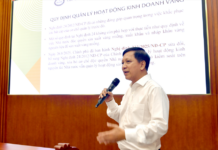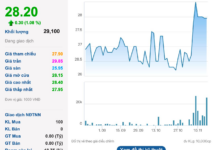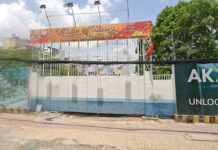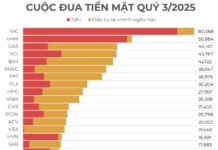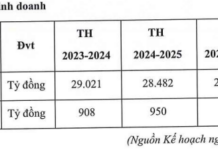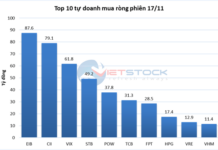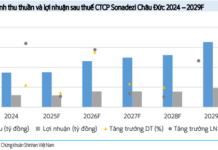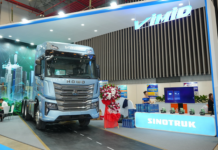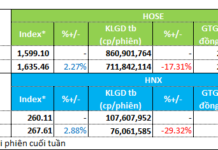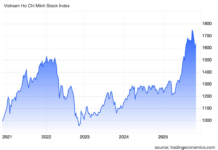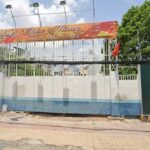$7.3 billion in capital needed
According to Deputy Minister of Transport Nguyen Duy Lam, in response to Dispatch No. 769, the Ministry has sent documents to local authorities providing guidance on reviewing the connectivity of expressways. The documents also requested that local authorities research the development of urban areas, industrial parks, export processing zones, new urban areas, and border gates in their planning to assess the need for connections to the existing expressway system. This ensures efficiency and cost-effectiveness, taking into account the balance of investment capital needs.
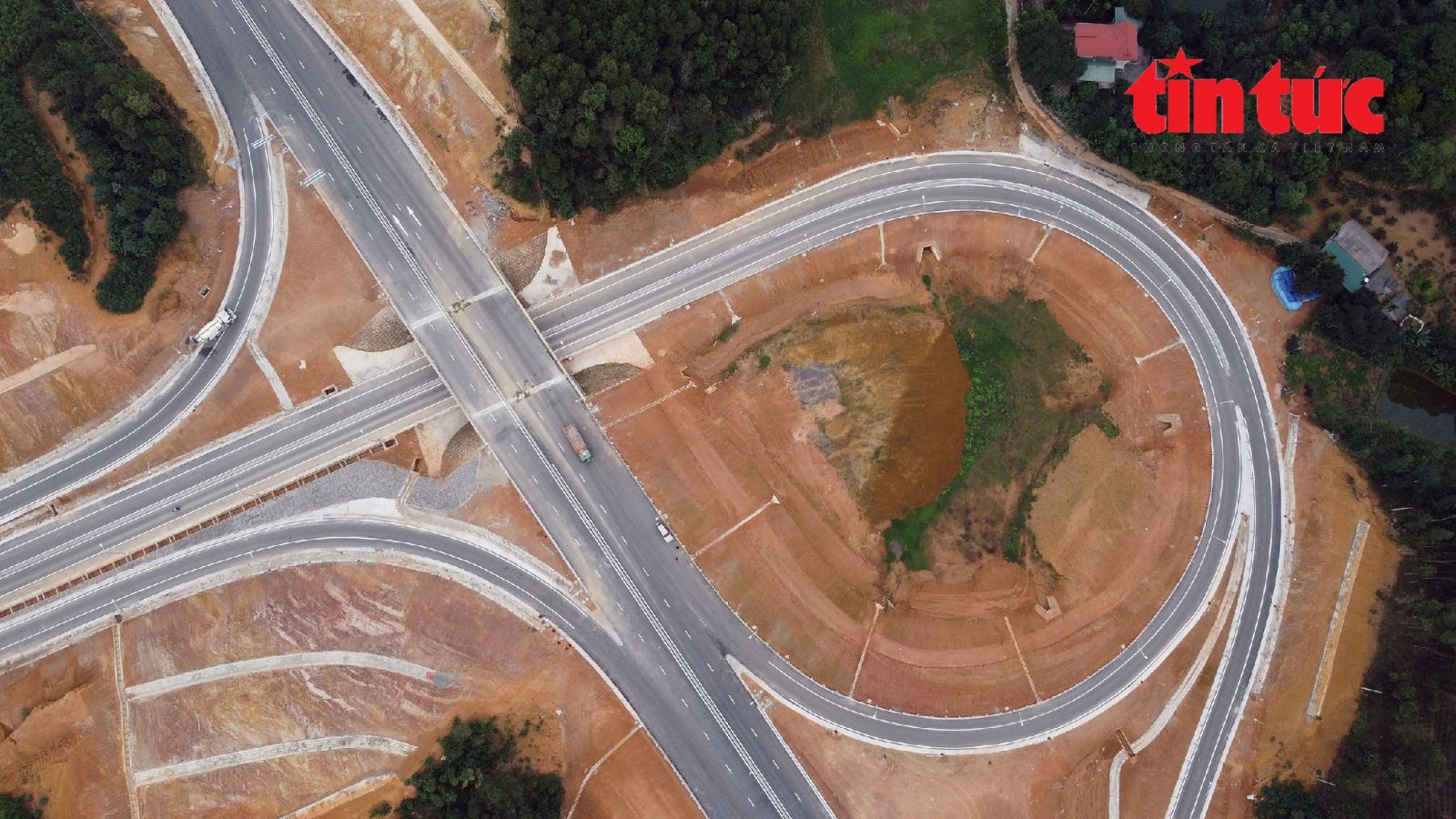
Interchange on the Tuyen Quang – Phu Tho expressway.
According to statistics, the Ministry of Transport has received 134 proposals from local authorities, with a total investment demand of about VND 174.5 trillion ($7.3 billion) for the improvement of interchanges and connecting roads to the expressway network. For example, Bac Giang province proposed capital allocation for the construction of an interchange on the Bac Giang – Lang Son expressway, while Ha Nam province proposed two interchanges on the Cau Gie – Ninh Binh expressway. Da Nang, Quang Nam, and Quang Ngai provinces suggested adding or expanding four interchanges on the Da Nang – Quang Ngai expressway, and Can Tho city proposed capital allocation for the construction of a connecting road on the Chau Doc – Can Tho – Soc Trang expressway.
The Ministry of Transport leadership stated that if the investment capital is balanced, investing in improving interchanges and connecting roads will enhance the efficiency of investment and operation, contributing to the socio-economic development of localities with expressways passing through. For new expressways, the construction of interchanges must comply with the regulations on the distance between interchanges according to the expressway standard QCVN 115:2024/BGTVT and the expressway design standard TCVN 5729:2012. The minimum distance between interchanges and entrances and exits on the expressway is 4 km, the distance between interchanges is 10 km, and in large cities, urban areas, and important functional areas, the distance is 5 km.
However, with the state budget still facing difficulties, it is challenging to balance the capital immediately. Currently, the country is prioritizing the expansion of 2-lane expressways to 4 lanes and focusing resources on achieving the goal of 5,000 km of expressways as set out in the Resolution of the 13th Party Congress.
Balancing capital for urgent interchanges and expressway connections
Based on the proposals from local authorities, the role of the expressways, and the ability to balance capital, the Ministry of Transport has conducted a preliminary review and assessment of the priority of local proposals based on comprehensive criteria. In terms of planning, the Ministry of Transport prioritizes investment in interchanges and connections that are in line with relevant plans, including scale and investment progress.
The priority will be given to investing in connections and interchanges with high transport demand, requiring early investment to meet the socio-economic development needs of localities. The focus will be on investing in interchanges and connections with the North-South expressway in the East.
For interchanges, the Ministry of Transport proposes prioritizing investment in interchanges connecting major transport hubs such as urban, industrial, and service areas. For connecting roads, priority will be given to connecting expressways with National Highway 1 at existing interchange locations to enhance traffic flow and connectivity with existing transport hubs on National Highway 1. The Ministry also plans to upgrade connecting roads to a minimum of 2 lanes, and expand sections of connecting roads that are narrow and inconsistent with adjacent sections.
Based on these criteria, the Ministry of Transport proposes to classify the investment in interchanges and connecting roads into four groups. The first group includes interchanges and connecting roads that have been allocated capital and are under construction or in the process of being invested, for which progress needs to be accelerated to put them into operation soon. The second group comprises interchanges and connecting roads that are urgently needed, requiring immediate capital allocation for investment in the 2021-2025 period. The third group includes interchanges and connecting roads that need to be prioritized for capital allocation in the next period, divided according to the investment authority of the Ministry of Transport and local authorities. The fourth group consists of interchanges and connecting roads on expressways managed and operated by the Vietnam Expressway Development and Operation Corporation.
Specifically, for the interchanges and connecting roads that are urgently needed, the Ministry of Transport proposes that the Prime Minister assign the Ministry of Planning and Investment to coordinate with the Ministry of Finance to balance about VND 4,352 billion ($183 million) from the central budget’s increased revenue and the medium-term public investment plan for the 2021-2025 period. This will provide support to the Ministry of Transport with about VND 2,075 billion ($87 million) to invest in eight connecting roads, including National Highways 19B, 19C, 29, 217, 217B, 49, 10, and 91. Additionally, about VND 2,277 billion ($95 million) will be provided to eight provinces, including Nghe An, Ha Tinh, Quang Binh, Quang Ngai, Binh Dinh, Lang Son, Thanh Hoa, and Thua Thien Hue, for the investment in two interchanges and ten connecting roads.
For the interchanges and connecting roads that need to be prioritized for capital allocation in the next period, the Ministry of Transport will review and prioritize the allocation of about VND 24,833 billion ($1.04 billion) in the medium-term public investment plan for the 2026-2030 period and other legal capital sources. This will be used to invest in four interchanges and twelve connecting roads, including National Highways 9B, 1, 47, 45, 40B, 28, 55, 70B, 34B, and 3, as well as two connecting branches on the Ho Chi Minh City – Trung Luong expressway.
Regarding the interchanges and connecting roads on expressways managed and operated by the Vietnam Expressway Development and Operation Corporation, the Ministry of Transport proposes that the Commission for the Management of State Capital at Enterprises direct the arrangement of about VND 7,007 billion ($294 million) to prioritize the investment in seven interchanges and one connecting road as proposed by six localities: Ninh Binh, Ha Nam, Nam Dinh, Da Nang, Quang Nam, and Quang Ngai.










